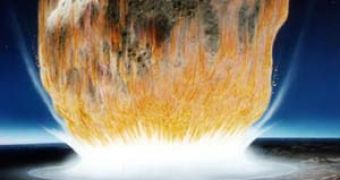Scientists performed a new study to evaluate what countries are most at risk of what they call "small" asteroid impact. The term small must not be taken literally, since a 1-kilometer-wide asteroid may not be large in astronomical terms, but it still can produce a disaster.
Using a new computer software, called NEOimpactor, researchers at the University of Southampton assessed the potential human and economic consequences of an asteroid impact on various countries and put together a Top 10 most exposed countries.
1 - China 2 - Indonesia 3 - India 4 - Japan 5 - United States 6 - Philippines 7 - Italy 8 - United Kingdom 9 - Brazil 10 - Nigeria
Nick Bailey of the University of Southampton's School of Engineering Sciences, developed the software with University colleague Dr Graham Swinerd and Dr Richard Crowther of the Rutherford Appleton Laboratory and explained how this classification arose.
Population density and estimates of the amount of infrastructure located in different parts of the world are leading factors in amplifying the consequences of an impact. Tsunamis, earthquakes and debris from a wide variety of impact locations also pointed to some countries, based on the vulnerability of their infrastructure.
For instance, a 100-meter-wide asteroid is most likely to cause only localized damage and casualties, while a 200-meter one hitting the ocean can generate tsunamis reaching a global scale. They also relied on previous impacts and the damage they produced and on the degree of industrial development of the countries.
The final results are ordered by the number of probable losses in terms of population and it's somewhat logical that countries with a large population and a large surface area, like China, Brazil and the United States, are present on the list.
On the other hand, countries occupying less space, but with high population density, like Indonesia, Japan and Philippines, are also prone to massive casualties, for obvious reasons. If they also have a long shoreline, the risk of post-impact victims caused by tsunamis greatly increases.
"The threat of the Earth being hit by an asteroid is increasingly being accepted as the single greatest natural disaster hazard faced by humanity. The consequences for human populations and infrastructure as a result of an impact are enormous," said Nick Bailey.
"Nearly one hundred years ago a remote region near the Tunguska River witnessed the largest asteroid impact event in living memory when a relatively small object (approximately 50 meters in diameter) exploded in mid-air. While it only flattened unpopulated forest, had it exploded over London it could have devastated everything within the M25."
"Our results highlight those countries that face the greatest risk from this most global of natural hazards and thus indicate which nations need to be involved in mitigating the threat."

 14 DAY TRIAL //
14 DAY TRIAL //